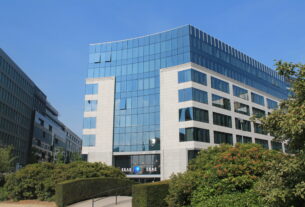In the last days of July, the decision of the Serbian Regulatory Authority of Electronic Media (REM) to again grant all four national frequencies to the same television stations close to the government, caused indignation of one part of the public. Before the tender announcement, the same quartet – TVs Pink, Prva, Happy, and B92 had the privilege of legally broadcasting its program in the whole of the Serbian territory, which was thus now extended.
Besides the awarded ones, ten more TV stations have applied for the licenses – Vesti, BK, Una, Nova S, N1, Kopernikus, TV2, TV K1, TV Tanjug, and Kurir. The list included both pro-government television stations as well as critical news channels such as N1 and Nova S.
Despite the statement made by the Serbian media watchdog REM that there “will not be irregularities” during the decision-making procedure, no independent or critical media was awarded the national broadcasting license.
The most controversial was the extensions of national frequency privilege to the TV stations Happy and Pink.
The former got the license in 2006 with a pledge to broadcast children’s content, which no longer exists on it, while the second broadcasts reality shows for a significant part of the day. Both televisions are strongly pro-government, lacking objectively informative programs, often spreading propaganda and serving as tools for attacking the political opposition and others critical of the regime.
President of the Independent journalist’s Association of Serbia Željko Bodrožić said for EWB that REM “explicitly broke the law and code of journalism” when awarding those four televisions with national frequencies. As he explained, all of them “had more commercial minutes for advertisement than it is allowed, did not have obliged content as written in the elaboration, and used to break the code of profession on a daily basis”.
The Slavko Ćuruvija Foundation and the Center for Research, Transparency, and Accountability (CRTA) filed a lawsuit against REM for breaking the law while awarding these televisions with national frequencies.
The executive director of the Foundation Ivana Stevanović explained for EWB that the lawsuit is based on three most essential irregularities, “non-compliance with program elaborations, absence of all five types of content, and the fact that all four televisions were subject to legal warnings”.
While making the final decision, REM was guided by the promises of “turning a new page” and simply getting over the previous mistakes of awarded televisions.
“This reasoning breaks all laws”, Stevanović said and added that REM was obliged to explain how they made a conclusion that these televisions will not break the regulations of national frequency again. However, an explanation is still missing.
Despite the final decisions, REM’s office recorded every regulation’s violation during the monitoring process and even published it on their website. On the other hand, it seems that REM’s Council doesn’t pay too much attention to it.
Member of REM’s Council Judita Popović stated for N1 after the disclosure of the decision, that “the majority who decided was wrong”, as well as that awarded televisions “gave no guarantees” during all these years that they will change the content. She was the one urging for taking into account the track-record of national frequency television stations when making the decision, but the president of the REM’s Council Olivera Zekić was against it.
Soon after awarding them with the national frequency, the owner of TV Pink Željko Mitrović misused the given privilege of his television for private reasons – to settle with Serbian influencer Bogdan Ilić known as Baka Prase, and to call for violence against him. As usual, REM didn’t react, explaining that there was nothing problematic in it.
The fifth national frequency: One more chance or just a false hope
Besides four awarded national frequencies, this year REM decided to grant the fifth one as well. The tender winner will be announced in October.
Bodrozić said that this whole “show” with the fifth national frequency is only for maintaining the uncertainty and trying to present REM as an “open” institution which is supporting “pluralism”.
The fifth national frequency was taken away from TV Avala back in 2014 due to their financial debts to the state and has never been granted again. Olivera Zekić, president of the REM’s Council, said before that the fifth frequency is not part of the same package as the first four.
Zekić highlighted that she would never allow any government representative to influence Council’s awarding procedure. However, bearing in mind her controversial attitudes and neglect towards nonexistent media freedom in Serbia, as well as the usual defending of pro-government media outlets, it seems that these statements are just masquerading for the public.
Since the elections have passed the regime might try to use fifth national frequency as a concession to the opposition and media closer to them, given mainly under the pressure of the European Union. In other scenarios, some other pro-government regime television will be awarded, or in the last case – it will be given to some completely irrelevant TV station with very low viewership.
Bodrozić is not optimistic at all. “I don’t believe even one percent that it will be granted to media closer to the opposition”, he stated for EWB.
Ivana Stevanović thinks that the whole process for the fifth national frequency is pretty untransparent and that REM once again avoided giving an explanation for its decisions.
“National frequency is a public good – they manage public good without being accountable to anyone”, concluded Stevanović.
Without at least one national frequency given to the independent media critical of the government, the majority of Serbian citizens would consequently remain in media darkness and the problem of media capture will continue.
This article was published as part of the project “Civil society for good governance and anti-corruption in southeast Europe: Capacity building for monitoring, advocacy and awareness-raising (SELDI)” funded by the European Union.
The post Serbian national TV frequencies again awarded to pro-government stations: Evidence of media capture? appeared first on European Western Balkans.





